Does anything more perfectly encapsulate the idea of ‘simple gourmet’ than a fresh garden sauce? What I love about fresh garden sauces is how simple they are to prepare, and yet how blissfully delicious they are. My Fresh Tomato Garden Sauce Recipe uses vine-ripe tomatoes as the base, which we season with oregano, grilled garlic, red pepper, and caramelized onions, with a bit of wine and parmesan cheese adding savory depth.
Using only simple ingredients, and being super simple to prepare, this recipe is just as much at home on busy weeknights as it is on relaxed weekends. Tossed with your favorite pasta, this sauce pairs well with things like crusty Italian bread, cheese, or sausage and meatballs.
Now, without further introduction, let’s make some sauce. Read on for a recipe overview, a complete ingredient checklist, and tips to make sure it comes out right every time.
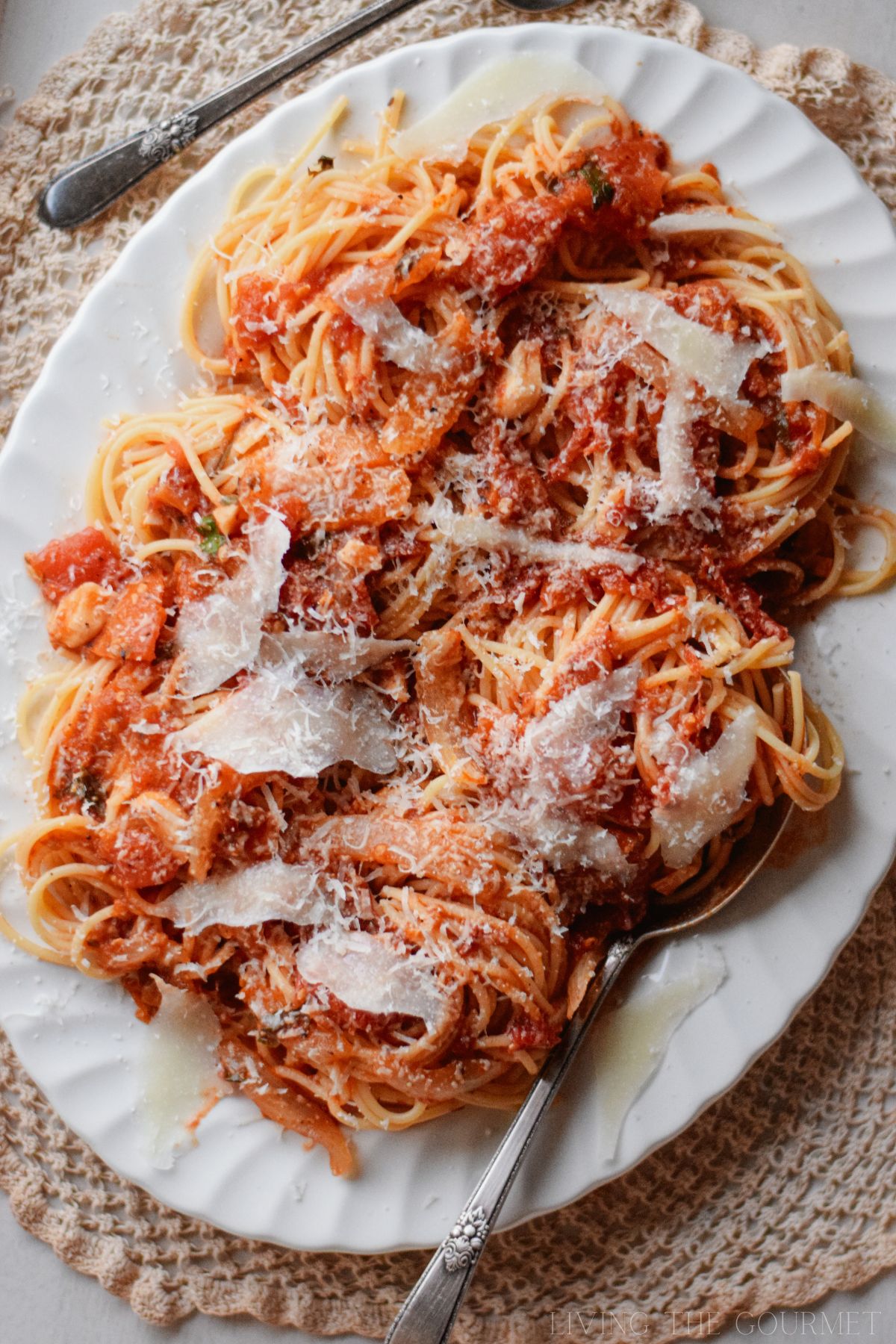
What to Expect – Recipe Overview
If you’ve read this far, I’ve probably piqued your interest, but you also probably still have a few questions. You might be wondering what this garden sauce is like in terms of taste and texture. Or maybe you want to know how hard this recipe is to make? Or perhaps what it pairs well with?
For the answer to those questions and more, read on.
Taste and Texture
As with any good garden sauce, this recipe is all about the rich, fresh flavors of the ripe tomatoes, heightened by the subtle sweetness of the grilled onions and the caramelized garlic. We’ve gently seasoned the sauce with dried oregano and red pepper flakes, for a mix of savory goodness and subtle heat, while Parmesan cheese adds a bit of salty depth. As is to be expected, the texture is hardy, but not oppressively so, with chunks of tomato carried on a mildly thick base. If your looking for the ideal comfort sauce for pasta, this is it.
Difficulty Level
Beginner-friendly. In general, preparing a delicious tomato sauce shouldn’t be a hard or lengthy process, and this recipe is no exception to that rule. If you can char some onions and garlic, and slow-simmer some fresh tomatoes, you can make this recipe. Overall, this is a great recipe for beginner home chefs, or those looking for a quick and simple weeknight bite.
Preparation Process
We start by charring the onions and garlic in olive oil with the herbs and spices listed in the recipe card. After a few minutes of gentle sautéing, we add in the fresh tomatoes, and allow it to come to a simmer. While the sauce simmers, we add in the bay leaf, wine, and grated cheese to deepen the sauce’s flavor. We follow that by allowing the sauce to simmer over low heat for at least an hour, allowing the flavors to meld. Towards the end of the process, we prepare our pasta of choice, and serve.
Pairings
This garden tomato sauce is very versatile, and pairs wonderfully with all of your favorite pasta types such as spaghetti, rigatoni, or penne. Toss the sauce with things like sausage or meatballs (or both!) for a hardier dinner. For added richness, serve it with a drizzle of olive oil, some extra grated cheese, and perhaps even an extra dash of red pepper flakes. As sides, consider a crisp green salad with a fresh vinaigrette and some crusty garlic bread. For a wine pairing, you can’t go wrong with a nice Chianti or Pinot Noir.
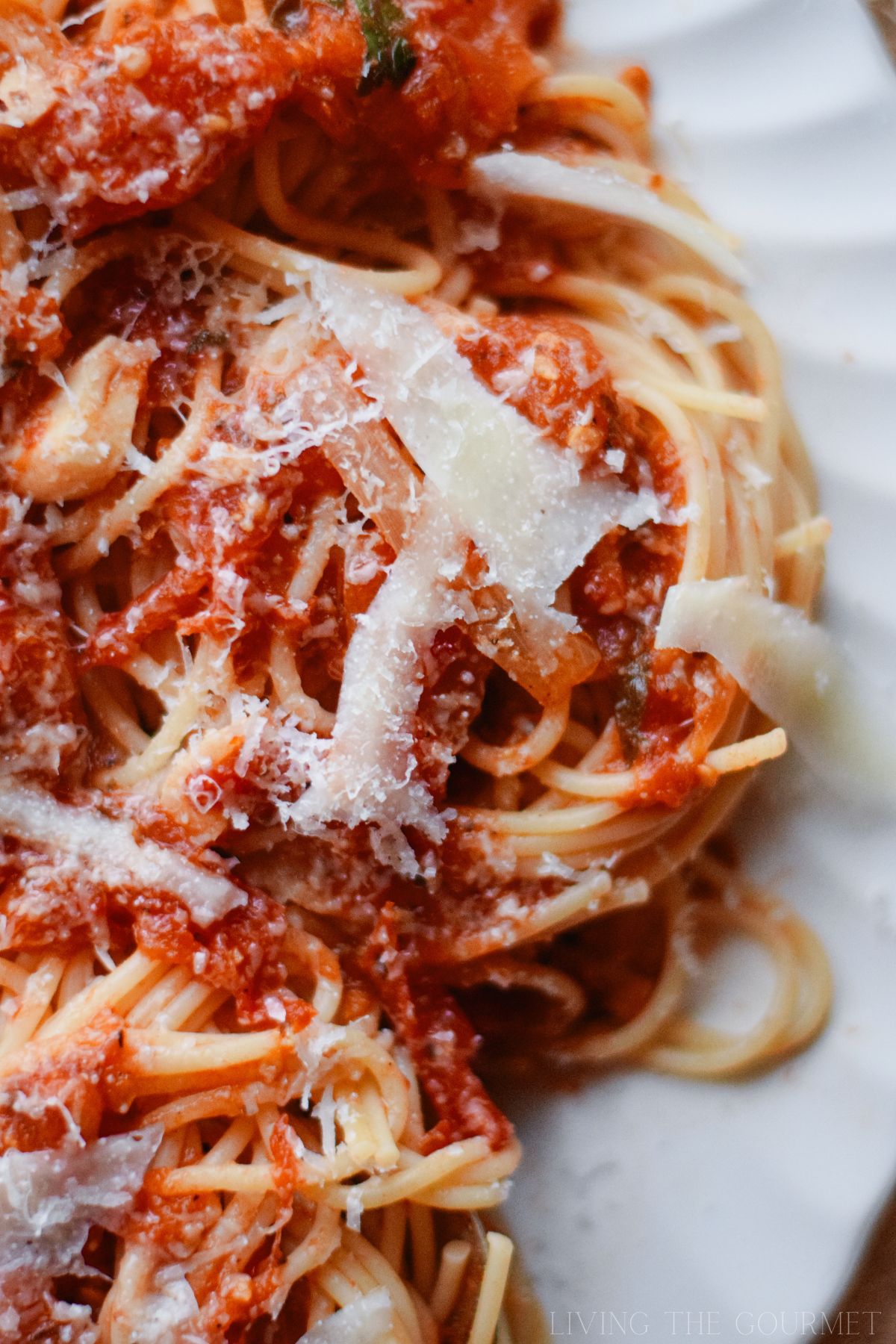
Ingredient Checklist – Everything You’ll Need
A garden sauce should only require simple ingredients, all of which are readily available and affordable at your local supermarket – and this recipe is no exception to that rule.
With that in mind, here’s a quick list of everything you’ll need along with notes, tips, and substitutions.
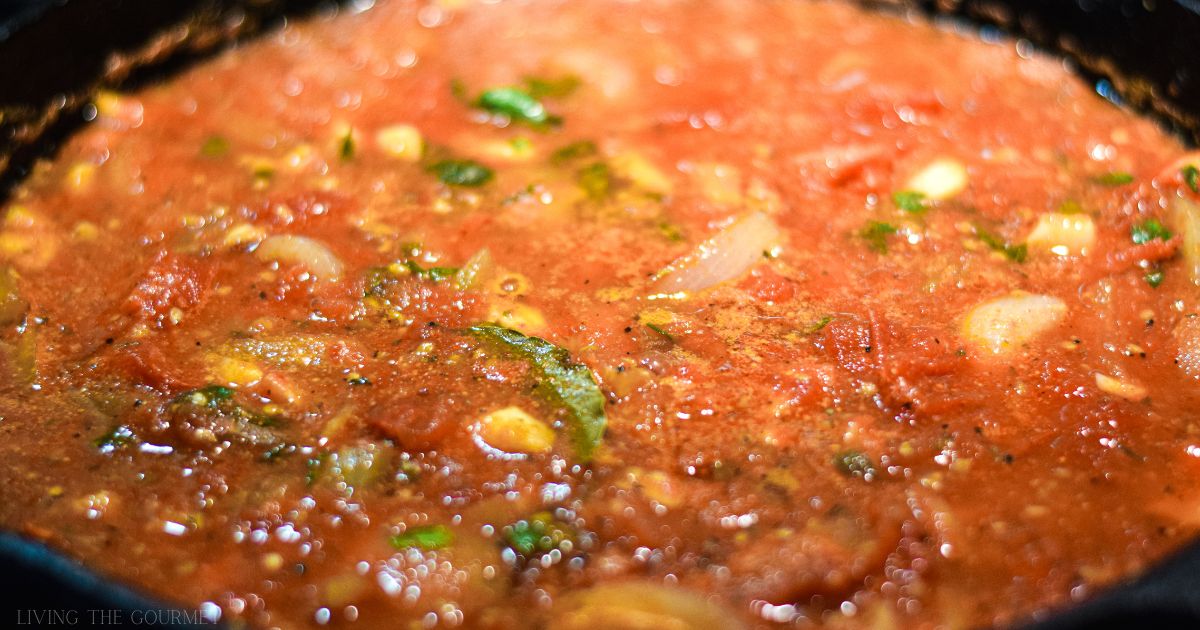
- Garden Tomatoes – 10 tomatoes
- Tip: Your preferred type of tomato will work just fine. Heirloom or vine-ripened varieties are generally considered ideal for garden sauces. All that really matters is that the tomatoes are fresh and ripe.
- Substitution: With that said, if fresh tomatoes aren’t available, a 28-ounce can of whole, plain tomatoes will get the job done just fine. Will this slightly alter the flavor and consistency? Sure, but it will still give you a delicious sauce – and that’s all that matters.
- Sweet Onion – 1 onion, grilled in its skin
- Tip: Why grill the onion in its skin? Because it helps bring out the onion’s natural sweetness, while also adding a hint of smoke.
- Substitution: The sauce is made with sweet onions in mind, so if sweet onions aren’t available, opt for Vidalia. If Vidalia aren’t available, then plain yellow or white onions will get the job done.
- Garlic – 1 head, grilled in its skin
- Tip: Grilling caramelizes the garlic, creating a mellow, slightly sweet flavor.
- Substitution: If pressed for time, use 4–5 cloves of fresh garlic without grilling, though the taste won’t be as rich.
- Sugar – 1 teaspoon
- Tip: Sugar helps to balance out the acidity of the tomatoes.
- Substitution: Plain sugar really does work best, and I wouldn’t recommend opting for a substitute.
- Salt – 2 teaspoons
- Tip: Start with 1 teaspoon of salt, and then work your way up from there according to preference as the sauce cooks down.
- Note: Plain table salt is all you need, but either Sea Salt or Kosher salt will work to mildly enhance the sauce.
- Dried Oregano – 2 teaspoons, crushed
- Tip: Remember to crush the oregano in your hand, as this helps to release the herb’s natural oils, ensuring maximal distribution through the sauce.
- Substitution: Oregano is best, but if you must use a substitution I would opt for either dried or fresh basil, or perhaps Italian seasoning. Again, however, oregano is optimal.
- Red Pepper Flakes – 1 teaspoon
- Tip: Adjust based on your desired heat.
- Substitution: Feel free to get creative. Your choice of fresh chilies, or a dash of cayenne, or dried chili flakes all work.
- Coarse Ground Black Pepper – 1 teaspoon
- Tip: Freshly ground black pepper will ensure the best aromatics, but pre-ground gets the job done.
- Romano or Parmesan Cheese – 3–4 tablespoons, grated
- Tip: Be sure to stir the cheese into the sauce as you add it.
- Tip 2: I cannot stress enough that freshly ground grated cheese really is superior, as pre-ground leaks away moisture, and that means leaking away flavor.
- Substitution: Any grating cheese will work, such as Parmesan, Pecorino Romano, or Locatelli.
- Wine – 3–4 tablespoons
- Tip: I recommend opting for a dry white wine or light red wine. These will add a subtle acidity to the sauce, along with background ‘wine flavor.’ Adjust to taste, you can roughly double the amount of wine without effecting the sauce’s consistency, as most of the wine (and ‘all’ of its alcohol) evaporates during cooking, leaving only the flavor compounds.
- Substitution: Chicken or vegetable broth will both work, or a splash of balsamic vinegar. That said, I do recommend using wine.
- Olive Oil – 2 tablespoons
- Tip: I cannot stress enough that extra virgin olive oil works best in sauces like this one.
- Bay Leaf – 1 leaf
- Tip: Remove the bay leaf before serving, as it is inedible.
- Note: Don’t skip the bay leaf, as this herb infuses the sauce with a delicate, earthy note.
- Pasta – 1 pound of your favorite type
- Tip: Long pasta, such as spaghetti or linguine, is great for holding onto the sauce, but short pasta like rigatoni or penne works well too.
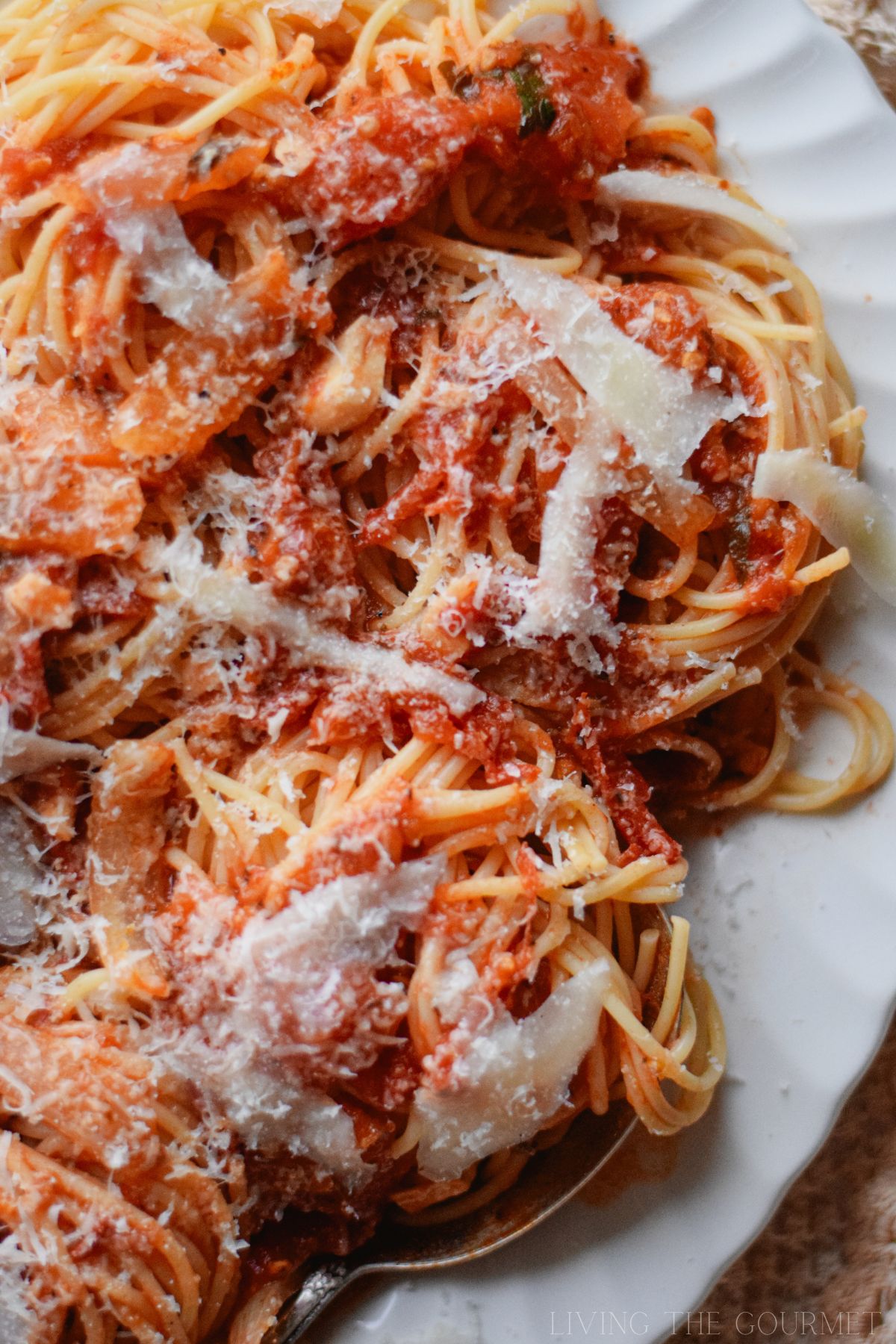
My Top Tips: Preparing a Fresh Garden Tomato Sauce
So you’ve gathered your ingredients, prepared your pan, and are ready to start cooking. However, before you do, I recommend you take a moment to read over my top tips for ensuring you prepare the best possible sauce.
Without further introduction, here they are:
- Blanch and Peel the Tomatoes (Optional)
- If you prefer a smoother sauce, that entails peeling and blanching the tomatoes. To do this, start by scoring the bottom of each tomato with a small “X” shaped incision, and then blanch them by briefly dipping them in boiling water (about 30 seconds or so, but no longer), followed by a quick ice water bath. Doing so will allow the skin to come off easily. However, if you prefer a thicker, chunkier sauce, leave the skins on.
- Grill the Onion and Garlic
- Yes, you can add the garlic and onion right to the sauce, skipping the grilling process, and this my be a tempting way to save time – but I strongly recommend that you do ‘not’ skip this process. Grilling the onions and garlic beforehand give the sauce a rich depth of flavor, and heighten its subtle sweetness, by muting the ‘bite’ of the onions and garlic. Furthermore, grilling the onion and garlic in their skins allows them to caramelize, which helps to balance out the acidity of the tomatoes. Do remember to let them cool before peeling.
- Low and Slow Simmering
- Once again, it may be tempting to try and rush the simmering process by blasting the sauce with heat, but I cannot stress enough how this will ruin the sauce. Instead, allow the sauce to simmer over a gentle heat for ‘at least’ an hour. The longer the sauce simmers over low heat, the more the flavors meld together. If you’ve got the time, opt for as much as two hours of low simmering.
- Season as you go
- Taste the sauce at each stage of prep, adjusting things like the salt, sugar, pepper, and herbs to match your preference. As the sauce simmers and reduces, the flavors concentrate, so avoid adding too much seasoning at the start – and that means tasting and seasoning as you go.
- Deglaze with Wine for Added Complexity
- After sautéing the onions and garlic, add the wine and let it cook down before adding the tomatoes. This enhances the sauce with a subtle acidity and depth that complements the sweetness of the tomatoes.
- Use a Heavy-Bottomed Pan for Even Cooking
- I cook exclusively in cast iron – and there’s a reason for that. A cast iron or heavy-bottomed pan retains and distributes heat more evenly than lighter alternatives, which is ideal for slow-cooking sauces. This prevents burning and helps the flavors develop fully.
- Remove the Bay Leaf Before Serving
- Often derided as the ‘dryer sheets of the kitchen,’ I admit that I love bay leaves, and find that they bring a subtle, earthy aroma to my sauces. That said, do remember to remove it from the sauce before tossing with pasta.
- Serve with a Drizzle of Fresh Olive Oil and Extra Cheese
- When serving, a final drizzle of extra virgin olive oil and a sprinkle of grated Parmesan or Romano add richness and elevate the presentation.
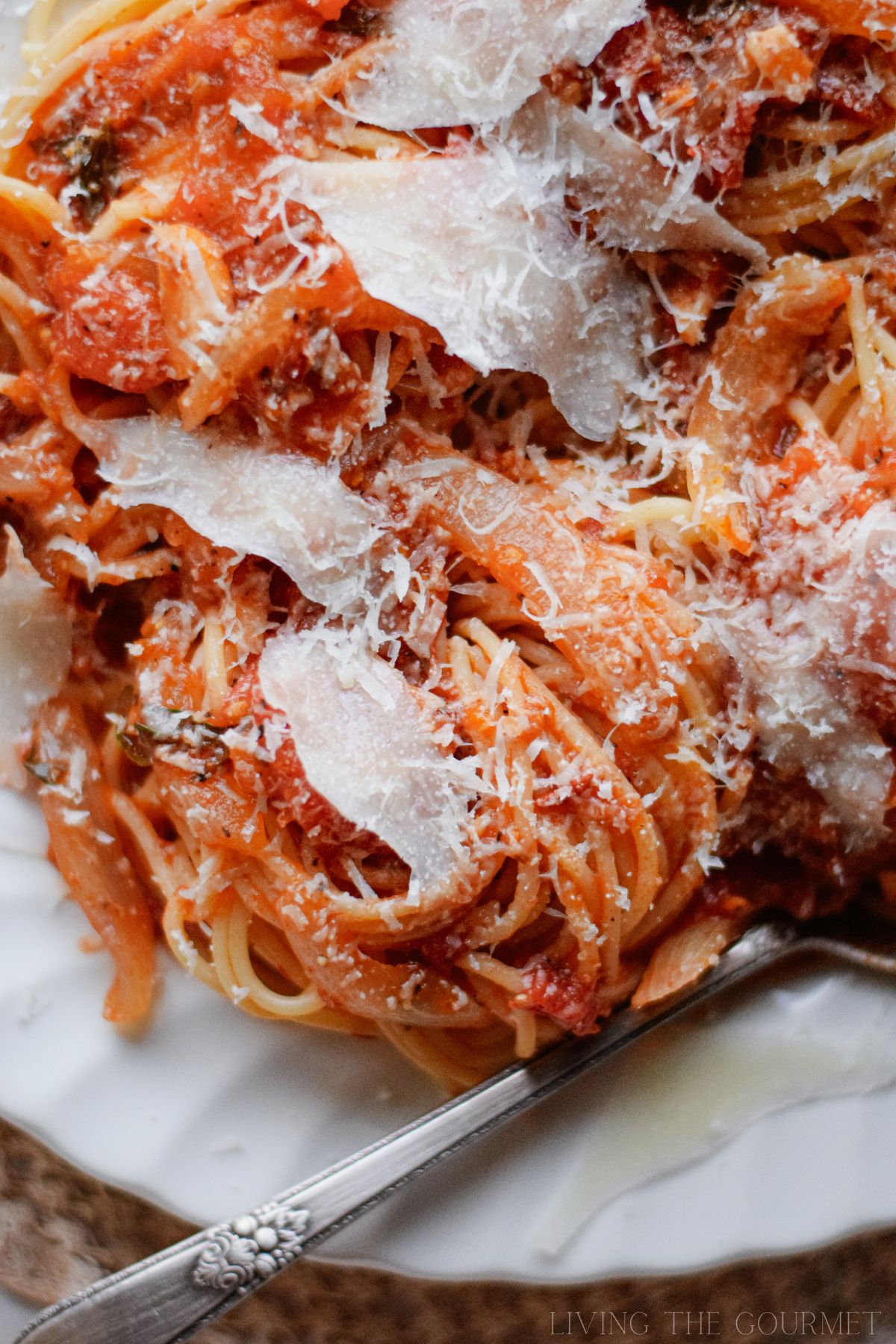

Fresh Tomato Garden Sauce Recipe
- Total Time: 30 minutes
- Yield: 4 1x
Description
This Fresh Tomato Garden Sauce Recipe is blissfully delicious with its vine-ripe tomato base, herbs, cheese, and wine for added depth!
Ingredients
- 10 garden tomatoes
- 1 sweet onion, grilled in its skin
- 1 head of garlic, grilled in its skin
- 1 tsp. sugar
- 2 tsp. salt
- 2 tsp. dried oregano, crushed
- 1 tsp. red pepper flakes
- 1 tsp. coarse ground black pepper
- 3-4 tbs. grated Romano or Parmesan cheese
- 3-4 tbs. wine
- 2 tbs. olive oil
- 1 bay leaf
- 1 lb. of your favorite pasta
Instructions
- Clean the tomatoes with water and dry the tomatoes.
- Quarter the tomatoes.
- Place the head of garlic and the sweet onion in a cast iron frying pan, in their skin, and let them slightly char. Let them cool before peeling.
- Pop the garlic from its skin and chop.
- Peel the onion from its skin and slice.
- Heat a large cast iron frying pan, to a gentle heat, with 2 tbs. of olive oil.
- Place the sliced onion, chopped garlic, and seasonings in the pan. Allow the garlic to become fragrant.
- Add the tomatoes and simmer on a gentle heat.
- Add the bay leaf, the wine and the grated cheese and simmer on a gentle heat for at least one hour or more the more it simmers the better it gets.
- Prepare the pasta as directed.
- Serve with grated Parmesan or Romano cheese and a drizzle of olive oil.
- Prep Time: 10 minutes
- Cook Time: 20 minutes
- Category: Main Dish
- Method: Stovetop
- Cuisine: Italian
And that’s my Fresh Tomato Garden Sauce Recipe! If you tried today’s recipe, or have any questions or suggestions, be sure to let us know in the comments below. We always love hearing from you.
Happy Cooking!
0
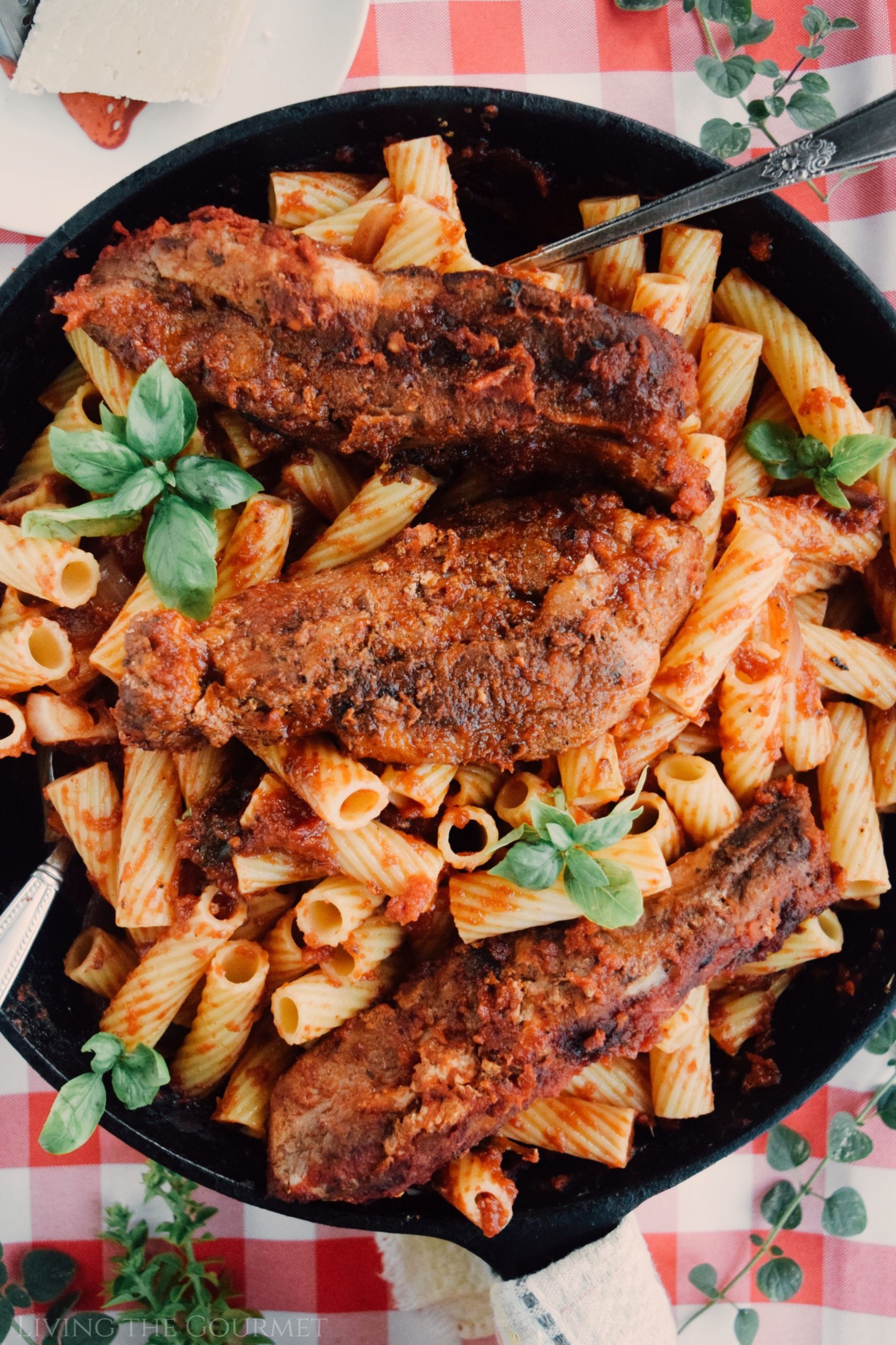
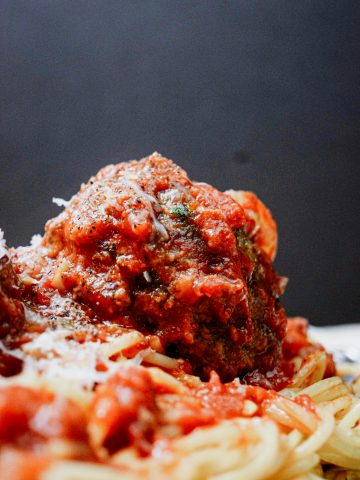
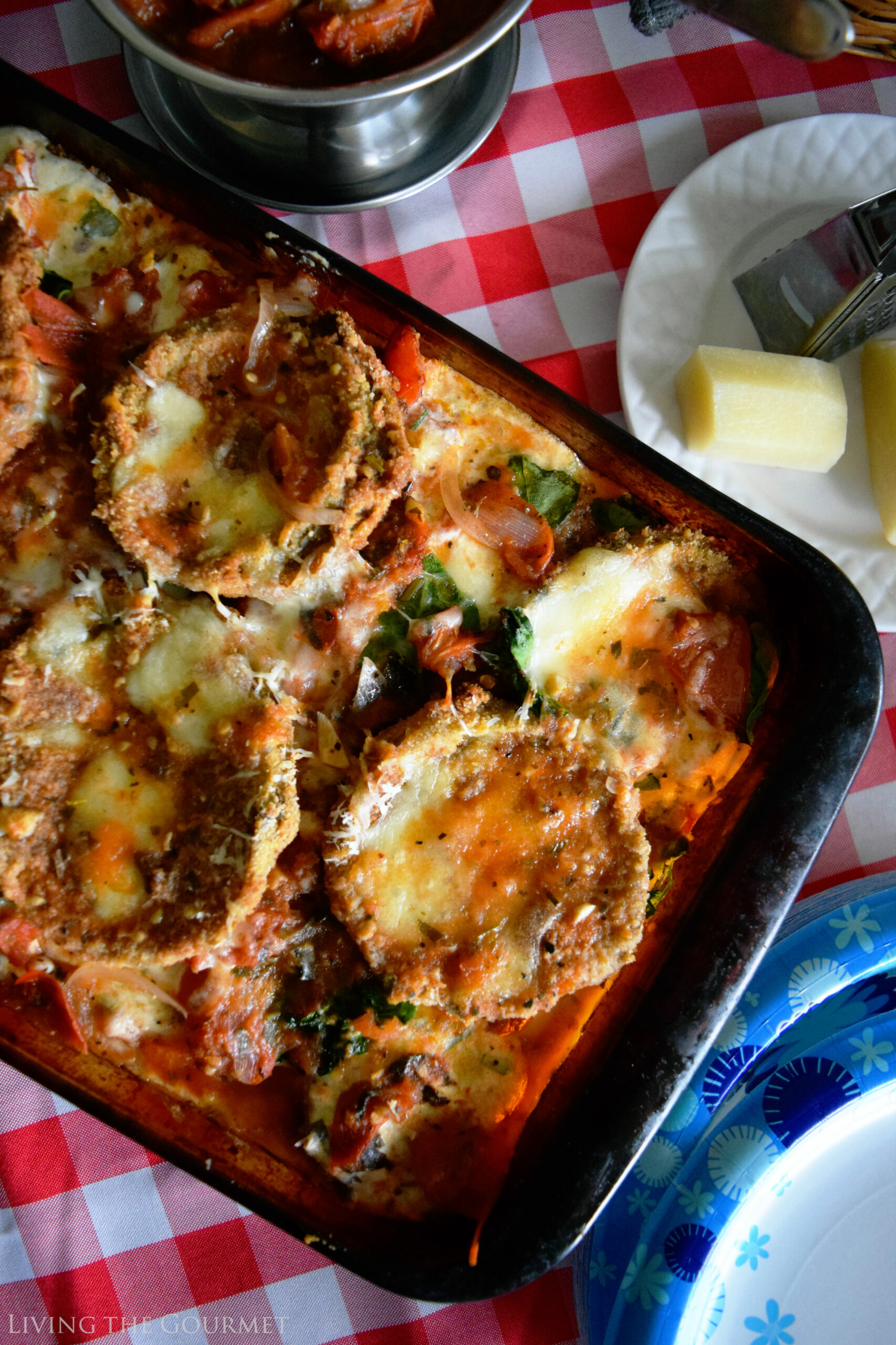
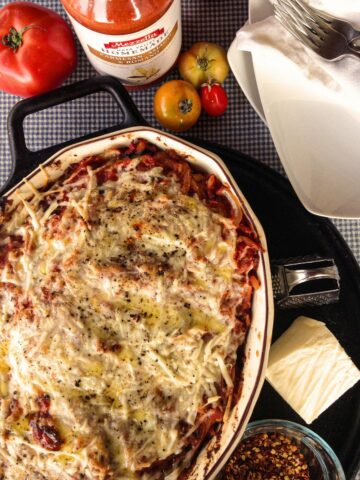

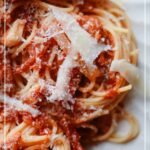

Leave a Comment